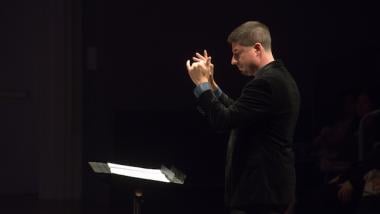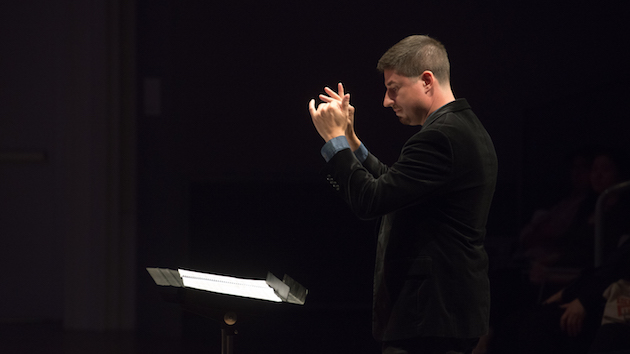
San Francisco Contemporary Music Players chose a fertile subject in Elliott Carter for their Saturday concert at the Taube Atrium Theater. Under Music Director Eric Dudley, in his first season, the group performed three great works by the composer himself — and two new works, by Sabrina Schroeder and Asher Tobin Chodos, contributed thought-provoking commentary.
Pitch schemes are central to Carter’s music, so it’s remarkable that Schroeder’s large chamber work Bone Games/Shy Garden consists of largely unpitched sounds. Instead, the musicians create rumbling, moaning, and creaking sounds, in an atmosphere like a thin fog. It would be easy to mistake these acoustic instruments for amplified ones. Not only do the extended techniques sound unfamiliar, two players on electronics create additional sounds that blur the distinctions between instruments, which are already made murky by an unusual seating arrangement.
Schroeder’s work responds to Carter’s somewhat surprising distaste for electronic music. Indeed, the performance is so physical (the strings, for example, bow all over their instruments) that it would be a shame only to listen to a pre-recorded track. Yet the subtle augmentations created by the transducers actually serve to bring out the individual players’ schemes.
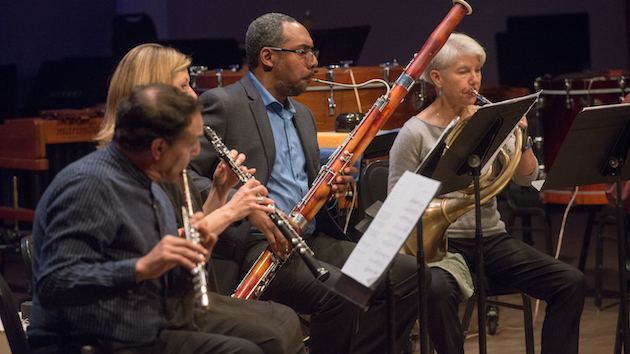
If Carter’s work celebrates dissenting voices, Asher Tobin Chodos, in Big Show, provides an alternate reading of our democracy — one of “manufactured consent,” or, in the first movement of his woodwind quintet, (ironically) happy-go-lucky unisons.
It’s fun to be impressed with the SFCMP musicians’ perfect ensemble. But this fundamental idea of cheery gestures, punctuated by pauses, doesn’t merit the length of this movement. And the entire work lacks pacing, which doesn’t help the fact that, despite its politically interesting premise, the music sounds pretty much as relevant as Carl Nielsen’s quintet from 1922.
The second movement does stand out for its treatment of a kind of a walking bass line, which takes on different characters as it’s passed around the group — languid on the bassoon and horn, but practically militant on the clarinet and flute. The connection to Carter’s ideas is clearest here, but the sounds themselves are about as far from Carter’s world as I can imagine, and that contradiction is the most impressive thing about this piece.
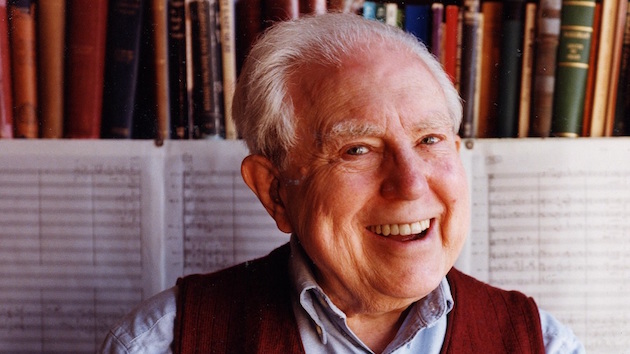
As for Carter’s own work? It’s famously fast-paced — and hard. Yet a fundamental melodicism characterizes the three works featured on Saturday’s program. If someone wants to whistle a piece, Carter once said, he will find something in it to whistle.
Take Changes, the 1983 work for solo guitar (performed with impish joy by David Tanenbaum). The short movement is changeable and dense. Registers constantly jump, speeds are sporadic, and the dynamic grades are so exacting, I wonder if it’s really possible to execute them live. On the one hand, Changes is a study of contrasting moods. Yet recurring pitch material, made clearer by the guitar’s quick decay, organizes the narrative in a way that feels digestible, if still spontaneous.
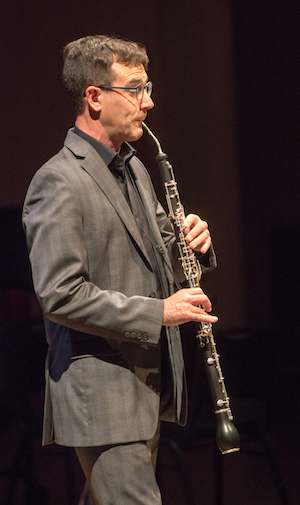
Kyle Bruckmann’s long-breathed phrasing heightened the expressivity of A 6 Letter Letter, the 1996 work for solo English horn. The work isn’t exactly predictable, but a rigorously organized harmonic scheme (6 pitches spell out S-A-C-H-E-R, for the wealthy patron and conductor Paul Sacher) makes it coherent, compact but complete.
The complex layering of individual schemes, long characteristic of Carter’s work, reaches new heights in Penthode, the 1985 work for five distinct quartets. One of Carter’s inspirations was North Indian Dhrupad music (the name derives from the word dhruva — immovable), and melodic continuity — if in a different form than in the English horn work — prevails to a striking extent in this lush score. Gestures glint as they travel from player to player, like a river changing profiles over its long course. In these hand-offs, especially, but in all aspects of the work, SFCMP’s performance did this masterpiece justice.

